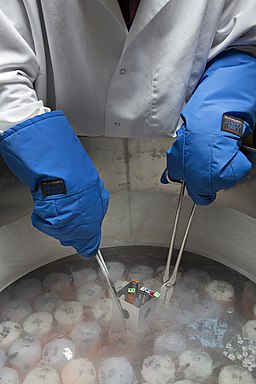Aggregated News

Like me, my eggs were flying economy class. We—my dog Stewie and I—were in seat 8D, while 12 of my cryopreserved oocytes, four straws of three eggs each, had a window seat further back. They were ensconced in a cryogenic storage flask, known as a dewar, which was packed into a rolling metal suitcase the size of a small carry-on. This was wedged upright on the floor of the seat next to Paolo, the courier overseeing their passage from a fertility clinic in Bologna, Italy, to the clinic in Madrid, Spain, where I would be undergoing in vitro fertilization (IVF) in several weeks’ time.
That morning, I’d watched a team of embryologists and their colleagues at the Bologna clinic pass various papers back and forth to Paolo, who would flash these documents at the airport to ensure that the oocytes didn’t get x-rayed on their way through security. The dewar was lined with a sponge that absorbs liquid nitrogen and slowly releases it, typically for a week to 10 days (depending on how large the suitcase is)...



